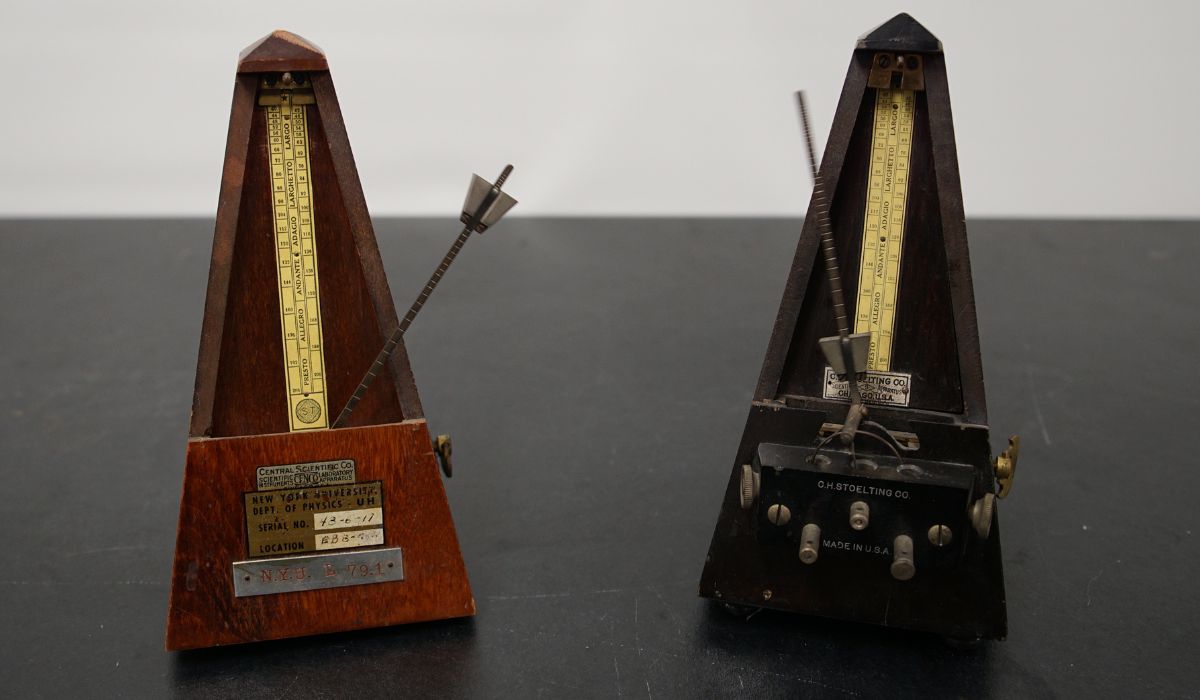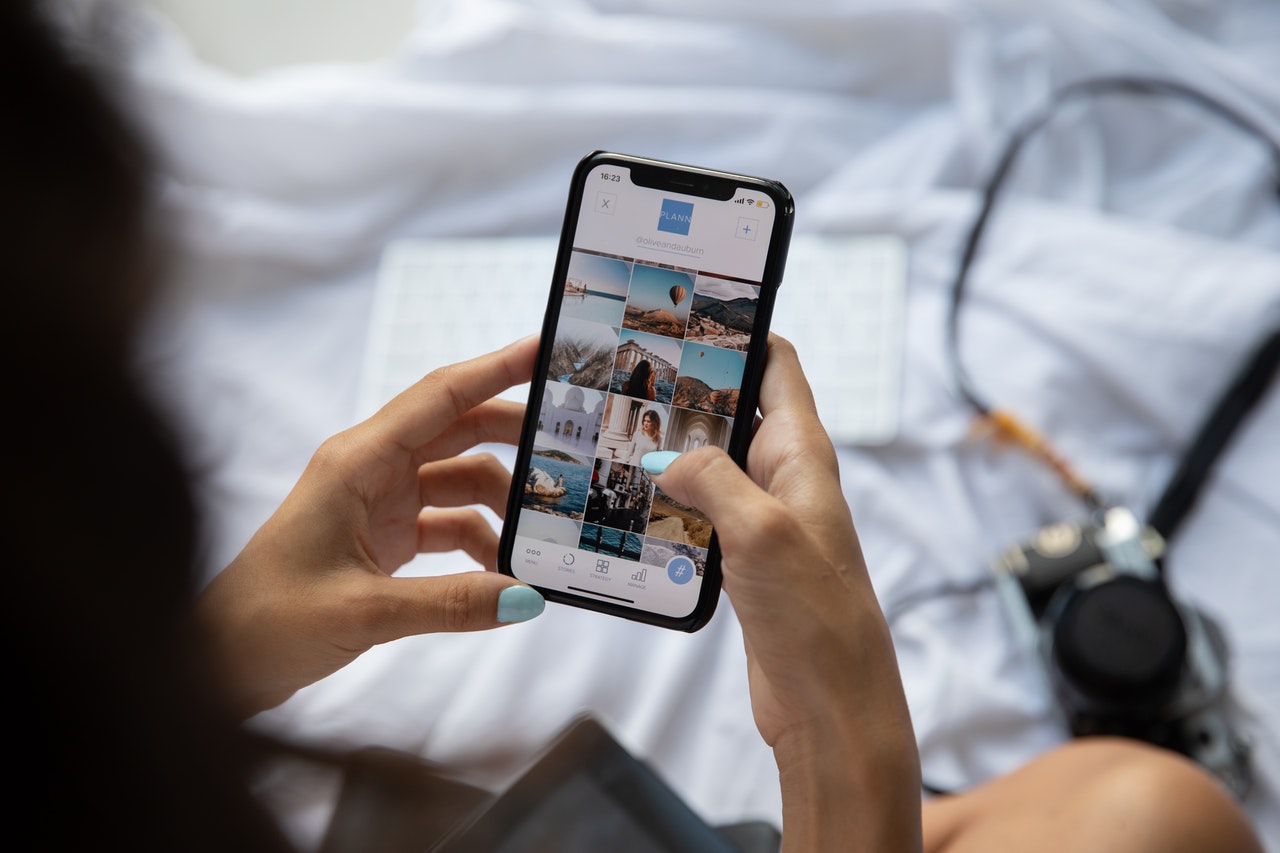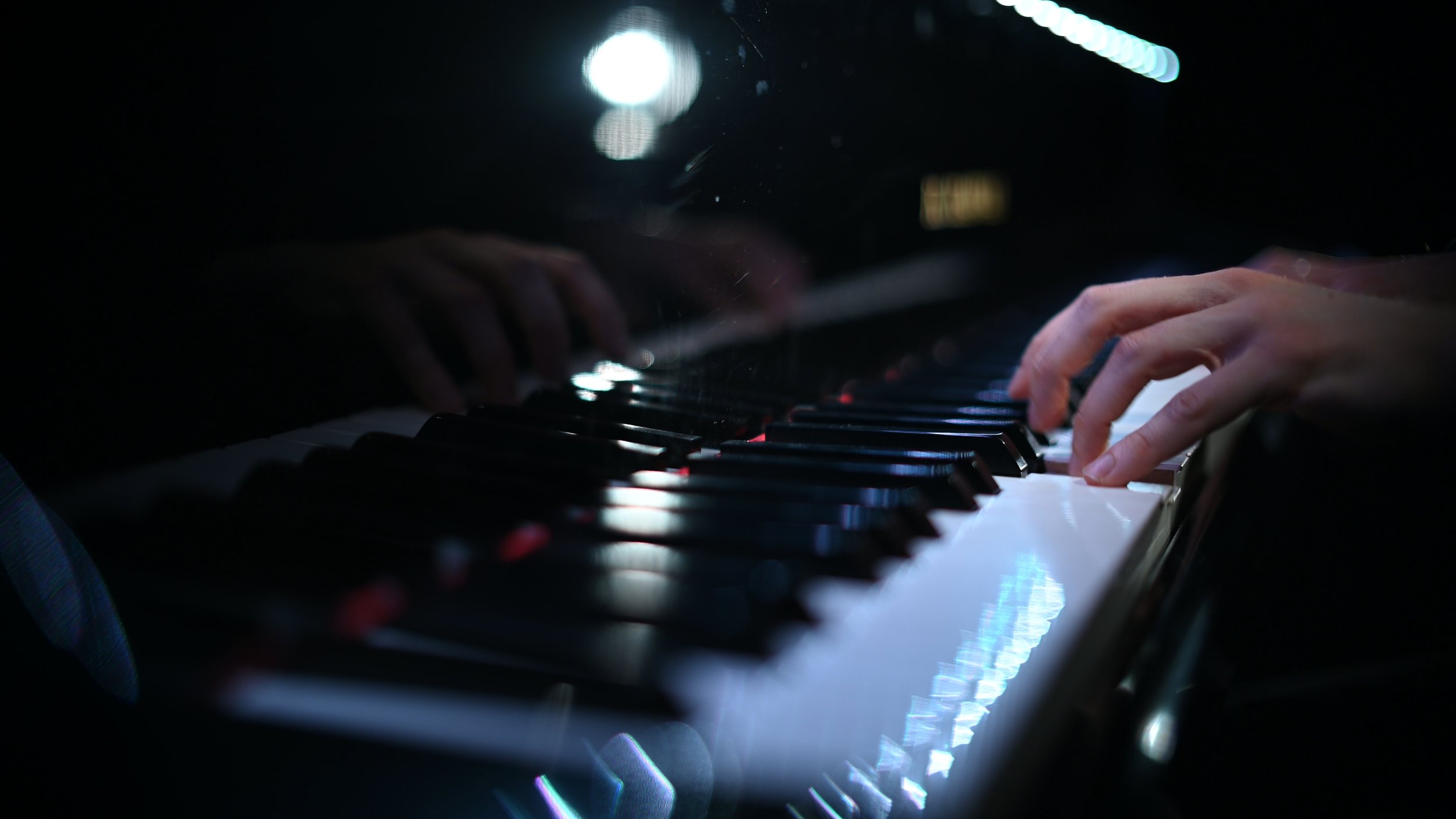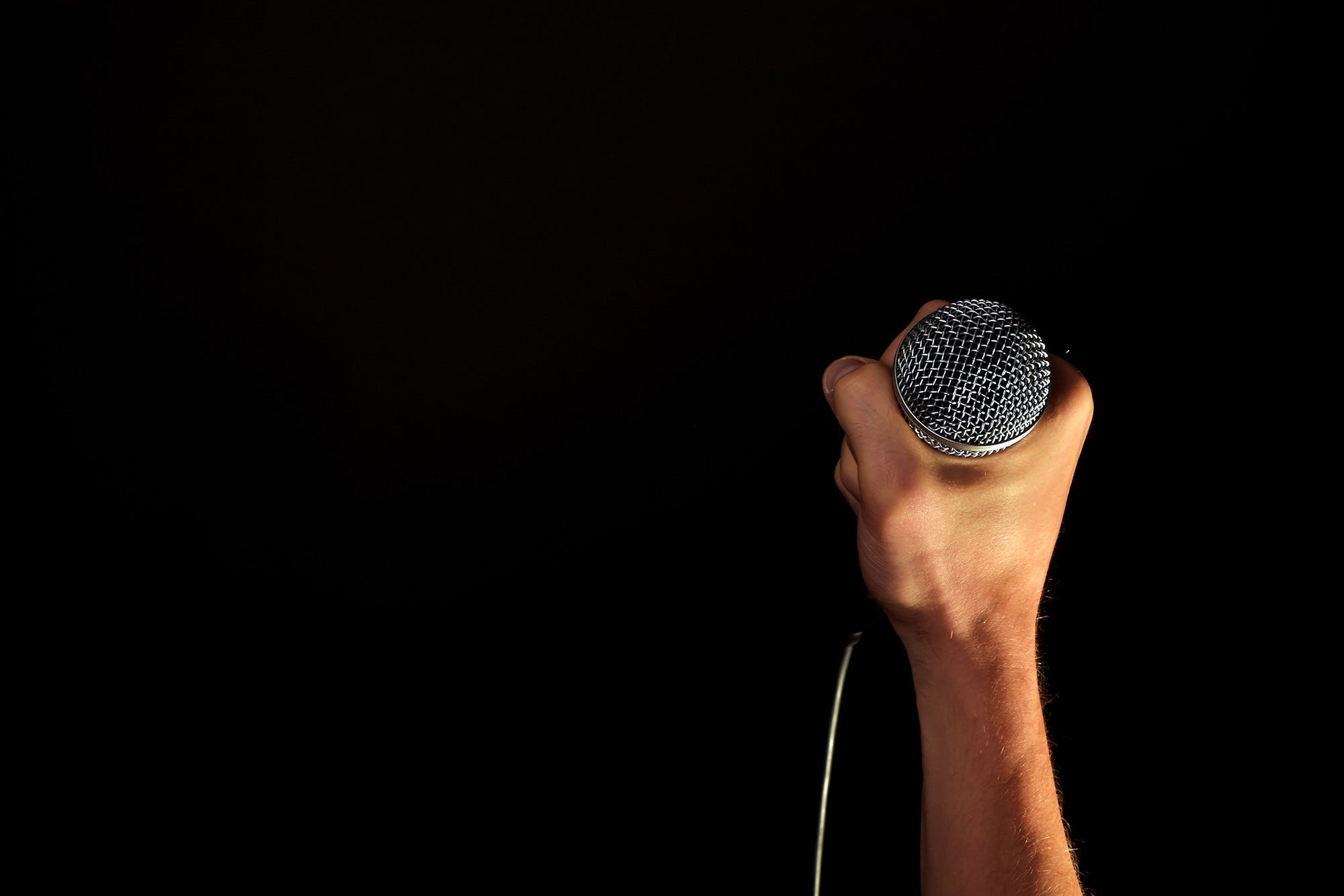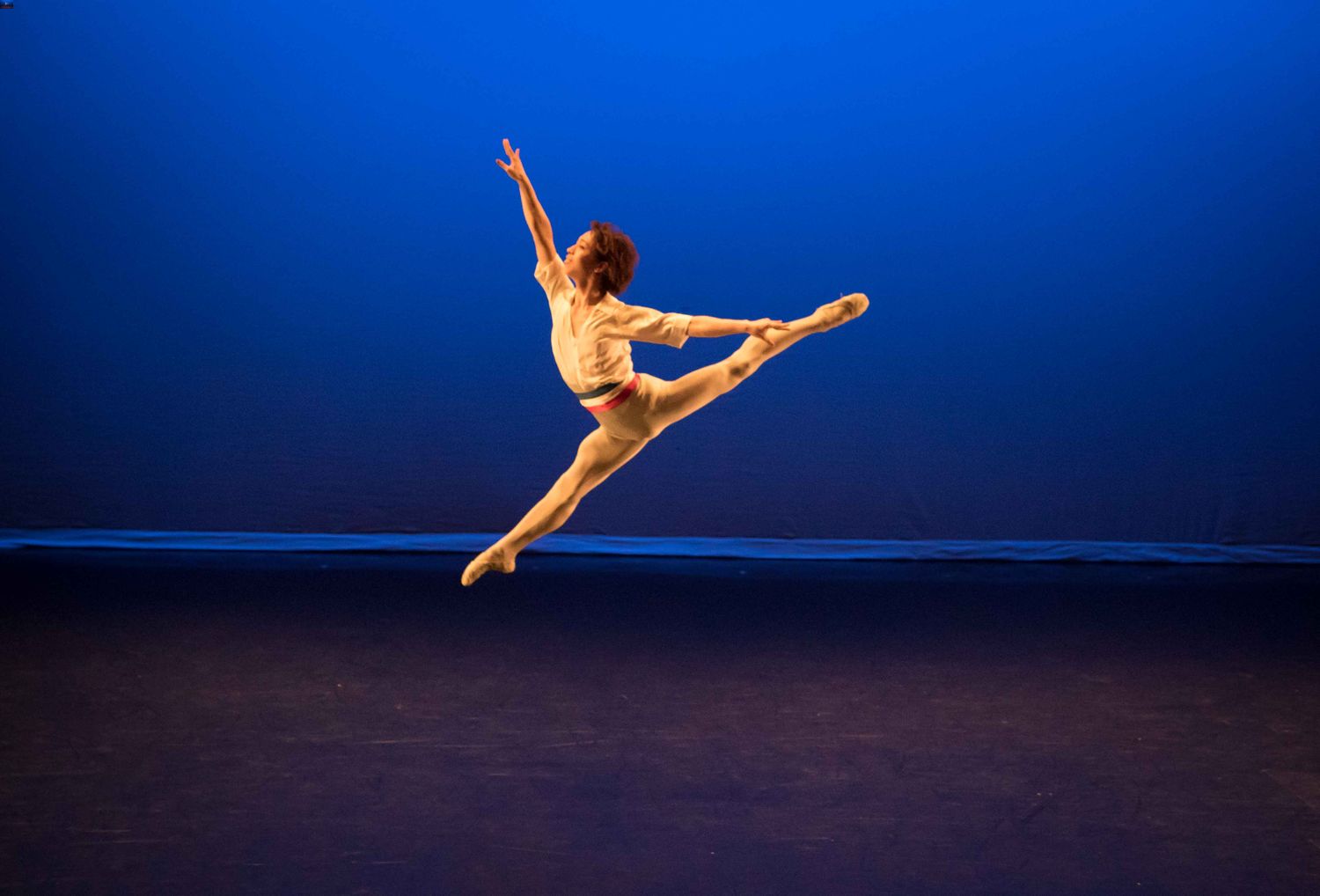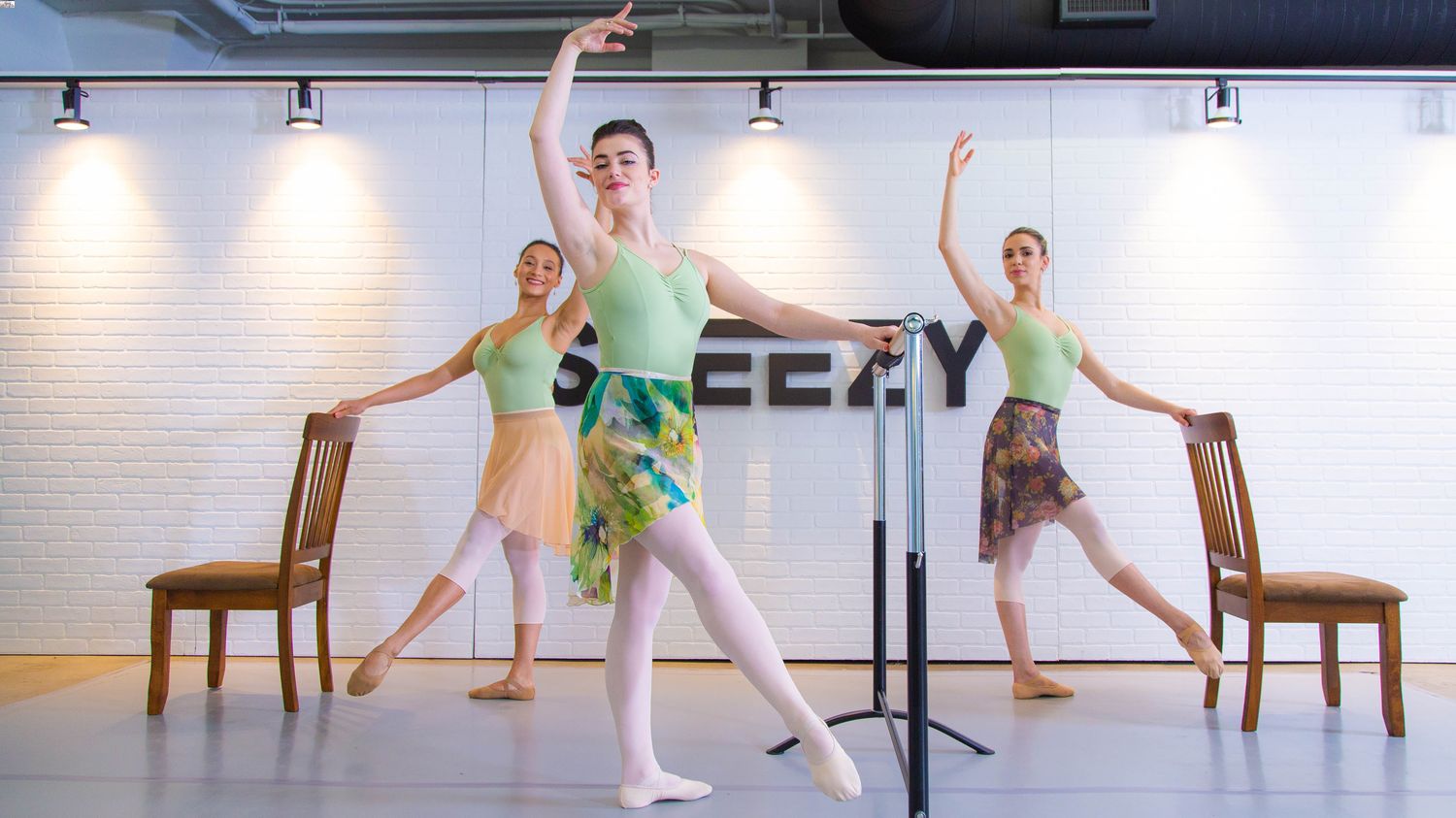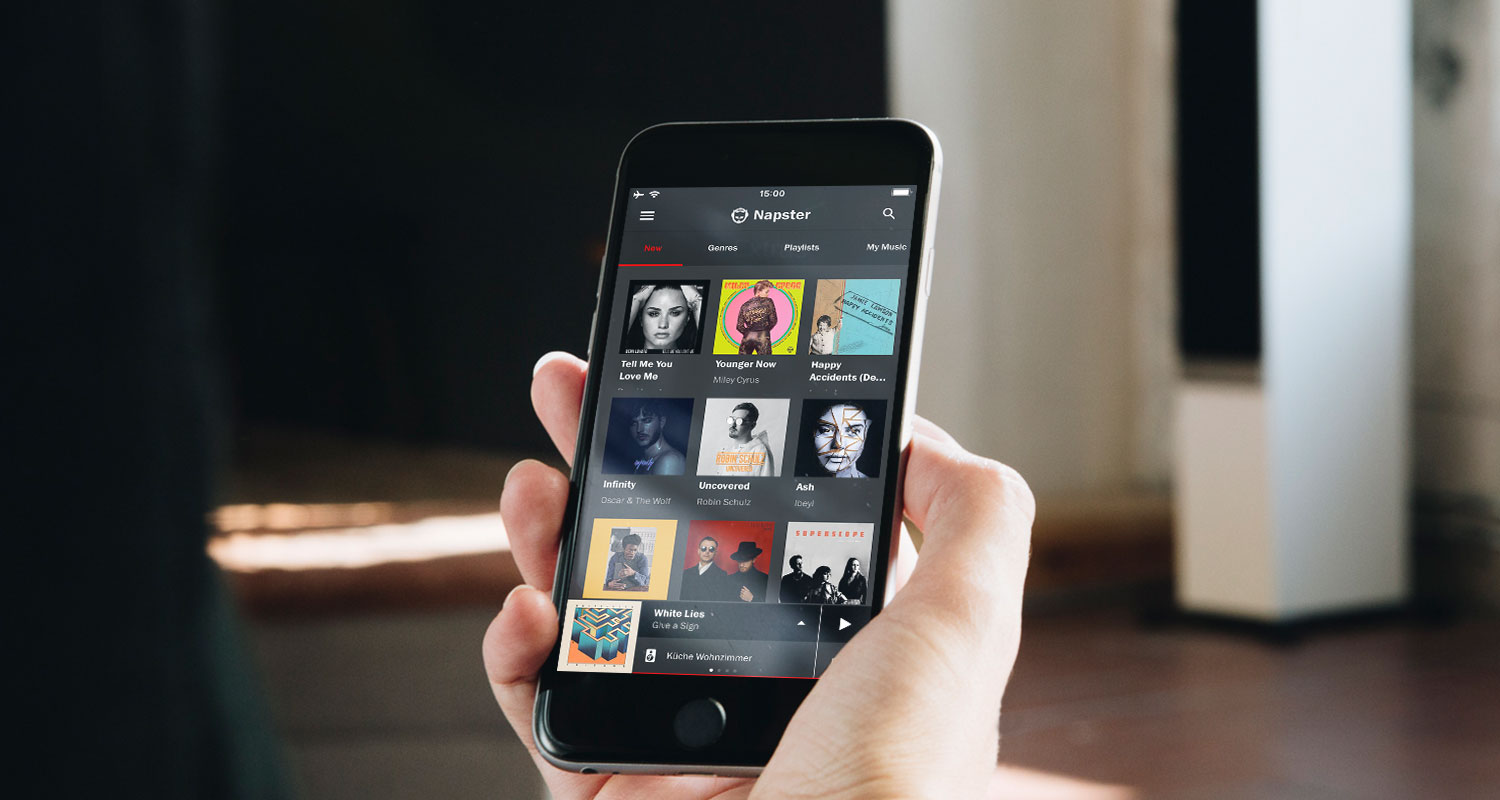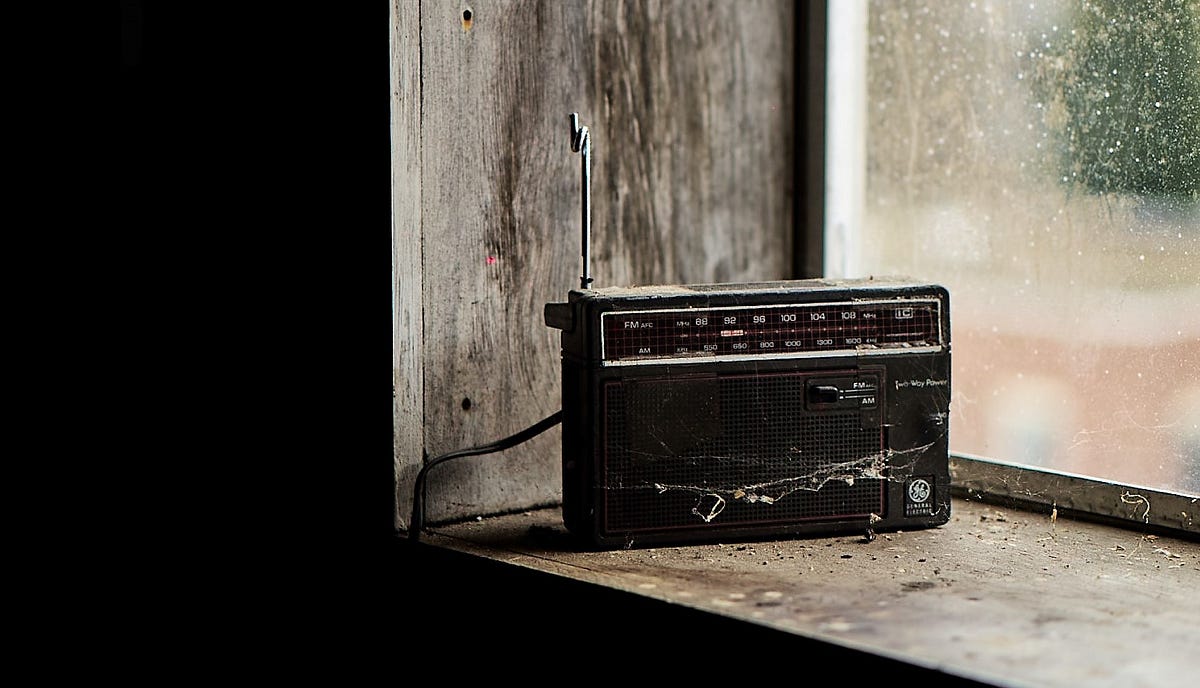Home>Production & Technology>Stereo>What Does Record In Stereo Mean


Stereo
What Does Record In Stereo Mean
Modified: January 22, 2024
Discover the meaning of "record in stereo" and explore its significance in the world of audio. Uncover the secrets behind the stereo experience and its impact on music enthusiasts.
(Many of the links in this article redirect to a specific reviewed product. Your purchase of these products through affiliate links helps to generate commission for AudioLover.com, at no extra cost. Learn more)
Table of Contents
Introduction
Stereo recording is an essential technique in the world of audio engineering and music production. It allows for the capture and playback of audio in a manner that closely resembles real-life sound perception. Whether you’re a musician, a sound engineer, or an audiophile, understanding the art of stereo recording can greatly enhance your audio experience and help you achieve professional-level results.
In its simplest form, stereo recording refers to the process of capturing sound using two microphones, positioned strategically to replicate the way our ears hear a sound in a three-dimensional space. By utilizing two microphones, stereo recording techniques create a sense of depth, width, and realism in the recorded audio.
Through stereo recording, not only can you accurately reproduce the natural tonal balance and spatial placement of instruments and voices, but you can also create a more immersive listening experience for the audience. From the subtle nuances of an acoustic guitar to the thunderous impact of a live drum kit, stereo recording allows the listener to experience music as if they were in the same room where it was originally performed.
Whether you’re recording a live performance, a studio session, or even ambient sounds in nature, understanding the principles of stereo recording can greatly enhance the quality and realism of your audio recordings. In this article, we will explore the many facets of stereo recording, including the benefits, techniques, equipment, common mistakes, and tips for achieving pristine stereo recordings. So, whether you’re a seasoned professional or just starting out in the world of audio engineering, join us as we dive into the fascinating world of stereo recording.
Understanding Stereo Recording
Stereo recording is based on the concept of capturing sound with two microphones to create a sense of depth and spatial positioning similar to how we perceive sound in real life. Unlike mono recording, which captures sound from a single source, stereo recording utilizes two separate microphones to simulate the natural hearing experience.
When we listen to sound in our everyday lives, our ears are positioned on either side of our head, which allows us to perceive sound in three dimensions. Our brain processes the small time and amplitude differences between the sounds reaching both ears to determine the direction and distance of the sound source. Stereo recording aims to replicate this natural listening experience.
The two microphones used in stereo recording are typically placed apart from each other to mimic the spacing of our ears. This microphone placement captures both the direct sound from the source and the ambient sound in the surrounding environment, providing a more immersive listening experience.
One crucial aspect of stereo recording is achieving a proper stereo image. The stereo image refers to the perceived location and width of the sound sources within the stereo field. It is determined by factors such as microphone placement, sound source positioning in the recording space, and the balance between the two channels.
Understanding the stereo image is essential in creating a realistic and enjoyable listening experience. For instance, if the stereo image is too narrow, the listener may perceive the sound as coming from a single point, losing the sense of spaciousness. On the other hand, if the stereo image is too wide, it can lead to an unnatural and exaggerated effect, potentially causing listener fatigue.
By carefully considering the microphone placement and the positioning of sound sources, an audio engineer can manipulate the stereo image to create a balanced and captivating recording. This attention to detail in stereo recording helps to recreate the natural depth and dimensionality of the soundstage, resulting in a more immersive and enjoyable audio experience.
Benefits of Stereo Recording
Stereo recording offers a range of benefits that enhance the quality and realism of audio recordings. Here are some key advantages of using stereo recording techniques:
- Improved Spatial Depth: Stereo recording captures the spatial placement of sound sources, providing a three-dimensional quality to the recorded audio. This allows the listener to experience the music or sound in a more immersive and realistic way, resembling a live performance.
- Enhanced Soundstage: By capturing the subtle nuances and spatial characteristics of sound, stereo recording expands the perceived width and depth of the soundstage. This creates a more expansive and enveloping listening experience, giving each instrument or voice its own space within the mix.
- Natural Tonality: Stereo recording accurately reproduces the tonal balance of the original sound source. It captures the frequency response, harmonics, and timbre, resulting in a more authentic and true-to-life representation of the recorded material.
- Separation and Clarity: With two microphones capturing distinct channels, stereo recording enhances the separation and clarity of individual sound sources. This allows for better control during the mixing and mastering stages, ensuring that each element can be heard clearly without being masked or muddled.
- Ambience and Depth: By capturing the ambient sounds and room reflections, stereo recording adds depth and realism to the audio. It recreates the sense of space and acoustics, making the listener feel as though they are present at the original recording location.
- Immersive Listening Experience: Whether it’s a music recording, a podcast, or a film soundtrack, stereo recording provides a more engaging and immersive listening experience. It adds a sense of depth, realism, and presence, drawing the listener into the world of the audio content.
Overall, stereo recording techniques play a vital role in capturing and reproducing audio with greater fidelity and realism. They allow for a more engaging and enjoyable listening experience, whether it’s in the context of music production, podcasting, film soundtracks, or any other audio application.
How Stereo Recording Works
Stereo recording works by capturing sound from multiple points in space, simulating the way our ears perceive sound. It involves the use of two microphones, positioned strategically to create a sense of depth and spatial imaging in the recorded audio.
The key principle behind stereo recording is capturing the time and amplitude differences between the sound reaching each microphone. Our brain uses these differences to localize sound sources, allowing us to determine the direction and distance of the sound.
There are two primary microphone techniques used in stereo recording:
- Spaced Pair: In this technique, two microphones are placed apart from each other, typically at a distance of around 12 to 48 inches. This spacing mimics the positioning of our ears and captures the natural stereo panorama of the sound. The microphones can be positioned at different angles to control the width of the stereo image.
- Coincident Pair: In this technique, two microphones are placed very close to each other, usually angled at 90 degrees or less. Common coincident techniques include the XY and ORTF configurations. By placing the microphones close together, phase differences are minimized, resulting in a more compact stereo image.
Once the sound is captured by the microphones, it is typically recorded onto separate tracks in a DAW (Digital Audio Workstation) or a multi-track recorder. These separate tracks allow for further manipulation and control during the mixing process.
During mixing, the two recorded channels can be panned left and right to position the sound sources in the stereo field. Adjusting the balance between the two channels can create an illusion of depth and spatial positioning. This gives the listener a sense of the sound sources being spread out across the stereo image.
In addition to microphone techniques and panning, other processing tools, such as reverb, EQ, and stereo imaging plugins, can be used to further enhance the stereo image and create a more immersive listening experience.
It’s worth noting that stereo recording is not limited to just two microphones. Advanced techniques, such as Blumlein and binaural recording, utilize multiple microphones or specialized microphone setups to achieve even greater spatial accuracy and realism.
Overall, stereo recording relies on capturing the time and amplitude differences between two or more microphones to emulate the spatial perception of sound. Through careful microphone placement, panning, and processing, stereo recording creates a captivating and immersive audio experience.
Different Techniques for Stereo Recording
Stereo recording offers a variety of techniques that can be employed to capture sound in a balanced and immersive manner. These techniques vary in terms of microphone placement and configuration, providing different sonic characteristics and spatial imaging. Let’s explore some commonly used stereo recording techniques:
- XY Technique: The XY technique involves placing two cardioid or coincident microphones closely together, with their capsules aligned at a 90-degree angle. This technique provides a focused stereo image with a well-defined center, making it ideal for capturing a clear and mono-compatible recording.
- ORTF Technique: Developed by the French Radio Broadcasting Authority, the ORTF (Office de Radiodiffusion-Télévision Française) technique uses two cardioid microphones spaced 17 cm apart and angled at 110 degrees. The ORTF technique provides a wider stereo image and a greater sense of depth compared to the XY technique.
- Mid-Side (M/S) Technique: The Mid-Side technique involves using two microphones—one cardioid (the “mid” microphone) and one figure-8 (the “side” microphone). The cardioid microphone is positioned facing forward, while the figure-8 microphone is positioned perpendicular to the source, with its null points facing the sides. The M/S technique offers excellent mono compatibility and allows for flexible manipulation of the stereo width during post-production.
- Blumlein Technique: Developed by Alan Blumlein, the Blumlein technique utilizes two figure-8 microphones, placed at a 90-degree angle to each other. This technique captures a precise and natural stereo image, with excellent localization and depth. However, it requires careful placement and monitoring to avoid phase cancellation issues.
- Binaural Recording: Binaural recording involves capturing sound using a specialized microphone setup that replicates the human ear anatomy, such as a dummy head or specialized binaural microphones. This technique recreates the spatial perception of sound, allowing for a highly realistic and immersive listening experience when using headphones, which are crucial for proper binaural playback.
- Ambisonic Recording: Ambisonic recording utilizes a multi-capsule microphone system called an Ambisonic microphone to capture sound from all directions. This technique allows for capturing a full 360-degree sound field, enabling immersive sound reproduction for various applications, including virtual reality and surround sound.
Each stereo recording technique has its own unique characteristics, advantages, and limitations. Choosing the right technique depends on factors such as the desired stereo image, the nature of the sound source, the recording environment, and the intended playback format.
Experimenting with different stereo recording techniques can offer creative possibilities and help capture sound in a way that best serves the artistic vision or the technical requirements of the project at hand.
Popular Stereo Recording Equipment
When it comes to stereo recording, having the right equipment can make a significant difference in the quality and clarity of your recordings. Here are some popular types of equipment commonly used in stereo recording:
- Condenser Microphones: Condenser microphones are widely preferred for stereo recording due to their high sensitivity and accurate sound reproduction. Large-diaphragm condenser microphones, such as the Neumann U87 and AKG C414, are popular choices for capturing vocals, instruments, and ambient sounds in stereo.
- Ribbon Microphones: Ribbon microphones are known for their warm and vintage sound characteristics. Models like the Royer R-121 and Coles 4038 are often used in stereo recording to add a unique coloration and smoothness to the captured audio, particularly for instruments like guitar amps and brass instruments.
- XY and ORTF Stereo Microphone Sets: Manufacturers like Audio-Technica, Rode, and Shure offer dedicated stereo microphone sets designed for XY and ORTF recording techniques. These microphones are carefully matched and calibrated for precise stereo imaging, making it easy to capture high-quality stereo recordings without the need for separate microphones.
- Portable Field Recorders: Portable field recorders, such as the Zoom H5 and Tascam DR-40x, are popular for on-location stereo recording. These compact devices feature built-in stereo microphones with adjustable configurations, making them ideal for capturing live performances, interviews, ambient sounds, and even nature recordings with ease.
- Mixer-Interfaces: Mixer-interfaces, like the Focusrite Scarlett and PreSonus AudioBox series, offer the convenience of connecting multiple microphones and instruments for stereo recording. These devices provide features like phantom power, low-latency monitoring, and direct USB connectivity, making them suitable for home studios and small-scale stereo recording setups.
- Studio Monitors and Headphones: To accurately monitor and mix stereo recordings, it’s essential to have quality studio monitors and headphones. Popular choices include models from brands like Yamaha, KRK, Genelec, Sennheiser, and Beyerdynamic, which offer accurate frequency response and detailed sound reproduction.
It’s important to note that the choice of stereo recording equipment will depend on factors such as your budget, recording environment, intended application, and personal preference. It’s recommended to research and audition different equipment options to find the combination that best suits your specific needs.
Remember, while having high-quality equipment can positively impact your recordings, skillful microphone placement and proper handling techniques are equally vital in achieving exceptional stereo recordings.
Common Mistakes in Stereo Recording
Stereo recording can be a complex process that requires attention to detail and proper technique. Even experienced audio engineers can fall victim to common mistakes that can affect the quality and accuracy of their stereo recordings. By being aware of these mistakes, you can avoid them and achieve better results. Here are some common mistakes to watch out for:
- Poor Microphone Placement: Incorrect microphone placement can result in an imbalanced stereo image or an unnatural soundstage. It’s essential to carefully position the microphones based on the stereo recording technique being used, the sound source, and the acoustic characteristics of the recording space.
- Improper Phase Alignment: Phase issues occur when the audio signals from multiple microphones are not aligned correctly. This can cause cancellation or comb filtering, resulting in a thin or hollow sound. Taking the time to ensure proper phase alignment during recording and in the later stages of production is crucial.
- Over- or Under-Stereoizing: Exaggerating the stereo width or having an overly narrow stereo image can result in an unnatural or unbalanced sound. It’s important to find the right balance and ensure that the stereo imaging serves the music or the sound source appropriately.
- Mismatched Microphones: Using mismatched or poorly matched microphones can result in differences in frequency response and sensitivity, leading to an uneven stereo image. It’s important to use microphones that are well-suited for stereo recording and ensure they are properly matched and calibrated.
- Lack of Monitoring: Failing to monitor the recording accurately can lead to missing or distorted elements in the stereo image. It’s crucial to use quality headphones or studio monitors to hear the nuances of the recording and make informed decisions during the recording process.
- Ignoring Room Acoustics: Neglecting the impact of the recording environment and the acoustic characteristics of the room can result in unwanted reflections, resonances, and an unbalanced stereo image. Proper acoustic treatment and considering the room’s inherent characteristics are essential for achieving optimal stereo recordings.
- Ignoring the Source’s Stereo Characteristics: Each sound source has its own stereo characteristics, such as the natural width and location in the stereo field. Failing to consider these characteristics can lead to unnatural or unrealistic stereo recordings. Understanding the source’s inherent stereo properties is essential for capturing a believable and pleasing stereo image.
By being mindful of these common mistakes, you can avoid potential pitfalls and improve the quality and accuracy of your stereo recordings. It’s important to develop your listening skills, pay attention to detail, and continually strive to enhance your technical knowledge and recording techniques.
Tips for Achieving High-Quality Stereo Recordings
Obtaining high-quality stereo recordings is a combination of technical knowledge, attention to detail, and artistic sensibility. Here are some valuable tips to help you achieve exceptional stereo recordings:
- Choose the Right Technique: Select a stereo recording technique that best suits the sound source, recording environment, and desired sonic characteristics. Experiment with different techniques to find the one that captures the depth, width, and realism you’re aiming for.
- Focus on Microphone Placement: Pay careful attention to microphone placement. Experiment with different positions and angles to capture the most accurate stereo image and balance between the sound sources. Consider the recording environment and room acoustics to minimize unwanted reflections and resonances.
- Monitor and Check for Phase Issues: Regularly monitor and check for phase issues during recording and post-production. Use techniques such as mono compatibility checks, phase inversion, and adjusting microphone distances to ensure a coherent and clear stereo image.
- Pay Attention to Source Positioning: Consider the positioning and spatial characteristics of the sound sources in the stereo field. Capture the natural width and depth of the sources by placing them appropriately in the recording space and adjusting the microphone angles accordingly.
- Use Quality Microphones and Cables: Invest in high-quality microphones and cables to ensure accurate sound capture. Match stereo microphone pairs to ensure consistency and balance between the channels. Use balanced cables to minimize interference and maintain signal integrity.
- Take Time to Set Levels and Gain: Properly set the levels and gain during recording to avoid distortion or clipping. Leave enough headroom to accommodate dynamic peaks and transients, ensuring a clean and undistorted stereo recording.
- Consider Room Acoustics and Acoustic Treatment: Understand and work with the acoustic characteristics of the recording space. If necessary, employ acoustic treatment measures to minimize unwanted reflections and reverberations that can affect the stereo imaging and clarity of the recordings.
- Monitor with Quality Headphones and Speakers: Use accurate studio monitors or high-quality headphones to monitor and evaluate the stereo recordings. Familiarize yourself with the sonic characteristics of your monitoring equipment to make informed decisions during the recording and mixing process.
- Experiment and Trust Your Ears: Explore different techniques and microphone placements to achieve unique and creative stereo recordings. Trust your ears and carefully listen to the results. Make adjustments and fine-tune as necessary to achieve the desired sonic balance and spatial placement.
- Post-Processing Carefully: Apply post-processing with caution, focusing on enhancing rather than fixing the stereo recordings. Use EQ, compression, and other processing tools sparingly to maintain the natural and authentic qualities of the stereo image while addressing any minor imperfections.
Remember, practice, experimentation, and critical listening are key to honing your stereo recording skills. Continuously strive to improve your techniques, stay updated with new technologies, and seek inspiration from professional recordings to achieve high-quality stereo recordings that captivate and immerse the listener.
Applications of Stereo Recording
Stereo recording finds applications across various fields within the audio industry, offering a wide range of creative possibilities and practical uses. Let’s explore some of the common applications of stereo recording:
- Music Production: Stereo recording plays a crucial role in music production, allowing musicians and producers to accurately capture the spatial positioning, tonal balance, and depth of instruments and vocals. From studio recordings to live performances, stereo recording techniques are used to create immersive and realistic soundscapes for music.
- Sound Design and Foley: In film, television, and gaming, stereo recording is used extensively in sound design and Foley artistry. It enables the creation of realistic sound effects, spatial ambiance, and immersive environments that enhance the visual experience and evoke emotional responses from the audience.
- Nature and Field Recording: Stereo recording is an invaluable tool in capturing the beauty and intricacies of the natural world. Whether it’s capturing wildlife, environmental sounds, or documentary-style recordings, stereo techniques allow for an immersive and detailed representation of the natural soundscape.
- Ambient and Atmospheric Recordings: Stereo recording is often utilized to capture atmospheric sounds, such as cityscapes, room tones, and environmental ambiences. These recordings can be used in film, television, virtual reality, or audio post-production to create a sense of space and immerse the listener in a specific environment or atmosphere.
- Podcasting and Audio Broadcasting: Stereo recording techniques are implemented in podcasting and radio broadcasting to create a more engaging and realistic listening experience for audiences. By capturing interviews, conversations, and audio dramas with stereo imaging, the content feels more dynamic, immersive, and lifelike.
- Live Concert and Event Recording: Stereo recording plays a vital role in capturing the energy and atmosphere of live concerts and events. It allows for a faithful representation of the performers, the audience reaction, and the overall soundstage. These recordings can be used for archiving, broadcast, or live album production.
- Virtual Reality (VR) and 360° Audio: With the rise of virtual reality and immersive media, stereo recording techniques are employed to capture spatial audio for VR experiences. By utilizing binaural or ambisonic recording methods, stereo recordings can be translated into three-dimensional soundscapes that enhance the sense of presence and immersion in VR environments.
These are just a few examples of the diverse applications of stereo recording. Its versatility and ability to create realistic and immersive soundscapes make it an essential technique in various industries that rely on high-quality audio production.
As technology continues to evolve, stereo recording techniques will continue to be refined and employed in innovative ways, enabling new and exciting possibilities in audio production and enhancing the way we experience sound in various mediums.
Conclusion
Stereo recording is a powerful and fundamental technique in the world of audio engineering and music production. It allows for the capture and reproduction of sound in a way that closely mimics our natural hearing experience. By utilizing two microphones strategically positioned, stereo recording provides spatial depth, width, and realism to audio recordings.
In this article, we have explored the various aspects of stereo recording, including its benefits, techniques, equipment, and applications. We have discussed the importance of proper microphone placement, monitoring, and addressing common mistakes to achieve high-quality stereo recordings.
Stereo recording offers a wealth of creative possibilities and practical applications across several industries. From music production and sound design to nature recordings and virtual reality experiences, stereo techniques enable the creation of immersive and captivating audio content.
Aspiring audio engineers, musicians, and enthusiasts should continue to learn, experiment, and refine their stereo recording skills. With careful attention to detail and a commitment to achieving the best sound capture, one can create recordings that are rich in depth, tonality, and spatial imaging.
Remember, mastering stereo recording techniques requires a combination of technical knowledge and artistic intuition. Trust your ears, explore different methods, and adapt them to suit the specific requirements of each recording situation.
Keep pushing the boundaries of stereo recording, continually improving your skills, and stay abreast of advancements in technology to unlock new levels of sonic excellence. Whether you’re capturing the magic of a live performance, designing immersive soundscapes, or simply seeking to enhance the listening experience, stereo recording is an invaluable tool that allows us to create audio that truly comes alive.

